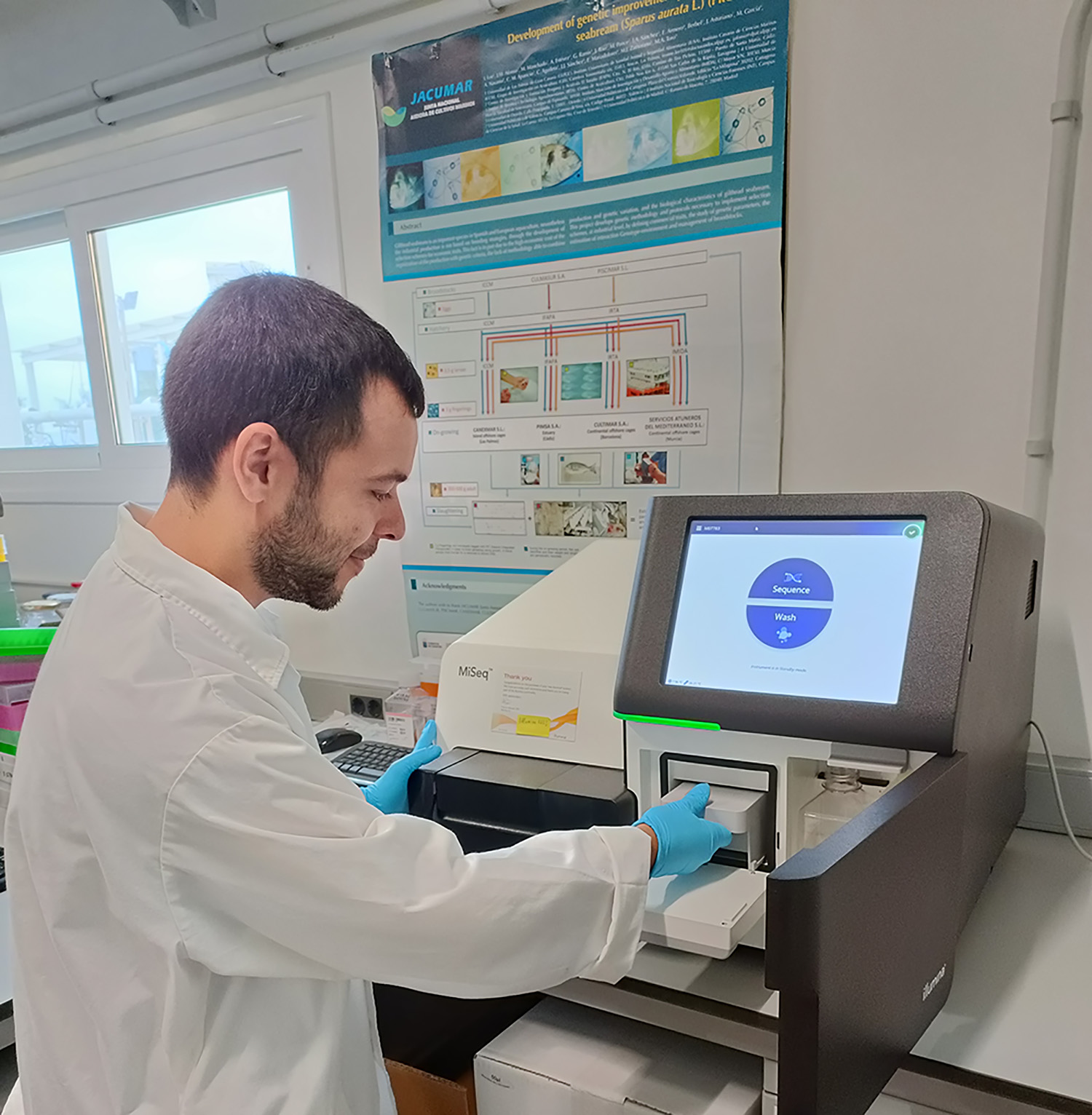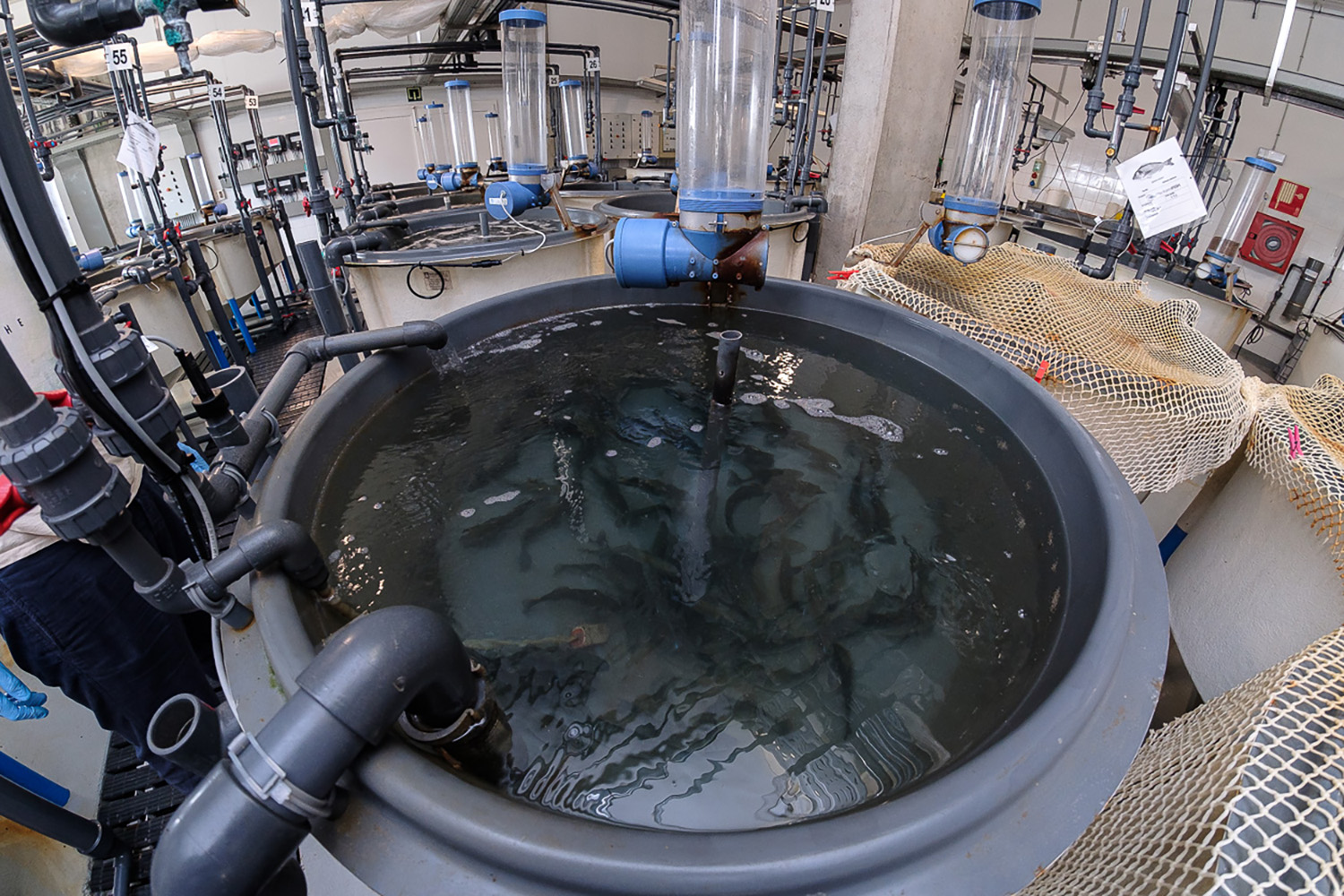The work of the researcher Álvaro Lorenzo-Felipe, who has got outstanding cum-laude, after presenting his thesis at the ULPGC, has described 64 genes responsible for the presence of deformities in gilthead seabream.
The importance of this discovery consists in that deformed offspring are not accepted by the consumer, so that aquaculture production of the species could be improved by selecting only those that are free of genetic predisposition.
A thesis developed by one of the researchers of the Institute for Research in Sustainable Aquaculture and Marine Ecosystems (ECOAQUA) from the University of Las Palmas de Gran Canaria (ULPGC), has opened the door to the development of a tool to determine the genetic potential of gilthead seabream breeders (Sparus aurata) used at industrial level.
The work, led by the researcher Álvaro Lorenzo-Felipe of the Aquaculture Research Group (GIA) of the University Institute ECOAQUA in collaboration with the Nutrigenomics group of the IATS-CSIC, examined more than 5.000 breeders of gilthead seabream from industrial batches of the national PROGENSA® and European PerfomFISH® projects in order to determine the influence of their genetic value for the presence of deformities in their offspring. The aim of analysis was to determine in the industry populations only those that are free of such genetic predisposition and to catalog which genes may be responsible for the prevalence of deformities.
During the development of the research, Lorenzo-Felipe has been under the direction of Dr. María Jesús Zamorano Serrano and Dr. Hyun Suk Shin, three experiments were carried out during the reproduction stages of two different groups of individuals: one with a higher genetic potential for the appearance of deformities and the other one with a higher genetic potential for normality, and both of them having a normal external appearance, in order to reproduce the conditions for the establishment of industrial production batches, in which deformed individuals are discarded.

Dr. Álvaro Lorenzo-Felipe
As a result of these researches, it has been concluded that a high genetic value for the deformity affects the quality of the broodstocks, reducing the number of viable larvae. In addition, the research confirms that reproductive individuals affected by this genetic value result in a higher number of deformed offspring, despite the normal appearance of the parents.
Finally, the researcher has been able to identify 64 genes, among those responsible for the appearance of deformity in gilthead seabream, which present changes in their sequence and which, as a result, could be used for the development of a genetic tool able to detect, in a simple way, the genetic potential of these animals when using them as breeders in their industrial production.
These discoveries will allow gilthead seabream aquaculture companies to know the genetic predisposition for deformity in their breeding stocks, making it possible to avoid those with a predisposition to the development of deformities, in order to optimize their reproductive processes.
The Dr. Álvaro Lorenzo-Felipe, who graduated in Biotechnology at the Pablo Olavide University, later specializing in aquaculture and bioinformatics at the ULPGC, has got an outstanding cum laude mark for this thesis with international mention after a three-month stay at the Center of Aquaculture Technologies (CAT, California, USA), last July 5th at the Marine Science and Technology Park of Taliarte of the ULPGC, before the doctoral thesis examination committee composed of the head of the GIA, Juan Manuel Afonso López, as president, Dr. Manuel Manchado Campaña, senior researcher at the Andalusian Institute for Research and Training in Agriculture, Fisheries, Food and Ecological Production (IFAPA, Spain), and Dr. Georges Koumoundouros, Professor of Marine Biology at the University of Creta, Greece.
For more information, contact:
Beatriz Díaz beatriz@mandarinacomunicacion.es / 620410871


